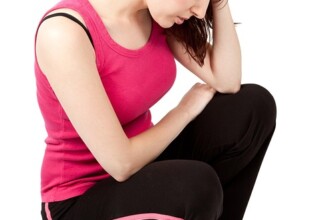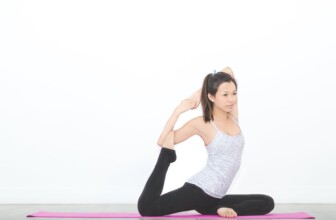The Healing Power of Acupressure: Unlocking Your Body's Natural Balance
Introduction
Acupressure is an ancient healing technique rooted in Traditional Chinese Medicine (TCM), which has gained modern recognition for its potential benefits. By applying pressure to specific points on the body, acupressure aims to promote natural healing, alleviate pain, and restore balance. This article delves into the profound effects of acupressure, exploring its mechanisms, benefits, techniques, and various applications, backed by research and real-life examples.
1. Understanding Acupressure
Acupressure is based on the same principles as acupuncture, which uses needles to stimulate acupuncture points. While acupressure employs manual pressure, both methods focus on the body’s energy channels, known as meridians.
1.1 The Basics of Energy Flow
In TCM, it is believed that wellness is achieved through a balanced flow of Qi (pronounced “chee”), the vital life force, throughout the body. Blockages or imbalances in Qi can lead to physical, emotional, or mental health issues. Acupressure aims to restore this balance.
1.2 Key Principles of Acupressure
- **Meridian Theory**: The human body has 14 primary meridians connecting acupressure points.
- **Five Elements**: Wood, Fire, Earth, Metal, and Water correspond to different organs and emotions.
- **Yin and Yang**: Represents the balance of opposing forces essential for good health.
2. Benefits of Acupressure
Acupressure boasts a wide range of health benefits that can enhance well-being across various dimensions.
2.1 Physical Benefits
- **Pain Relief**: Effective for headaches, back pain, and joint pain.
- **Muscle Relaxation**: Alleviates tension and stiffness.
- **Improved Circulation**: Enhances blood flow, promoting healing.
2.2 Emotional and Mental Health
- **Stress Reduction**: Reduces tension and promotes relaxation.
- **Anxiety Management**: Helps regulate mood and emotional states.
- **Emotional Release**: Facilitates the release of pent-up emotions.
2.3 Digestive Health
- **Nausea Relief**: Particularly helpful for motion sickness and pregnancy-related nausea.
- **Digestive Disorders**: Can aid in conditions such as irritable bowel syndrome (IBS).
3. Mechanisms of Action
The healing effects of acupressure can be attributed to several mechanisms.
3.1 Neurotransmitter Release
Pressure on acupressure points can stimulate the release of endorphins and other neurotransmitters, resulting in pain relief and emotional well-being.
3.2 Gate Control Theory of Pain
According to this theory, stimulating certain pathways in the nervous system can block pain signals from reaching the brain.
3.3 Improved Blood Flow
Pressure increases circulation at local sites, facilitating healing and reducing inflammation.
4. Techniques of Acupressure
Several techniques can be employed in acupressure to maximize its benefits.
4.1 Using Fingers or Tools
The most common method is applying pressure with fingers. Specialized tools can also be used for more targeted pressure.
4.2 Timing and Duration
Sessions can vary but usually last between 2 to 5 minutes per point, with entire sessions lasting about 30 minutes.
4.3 Self-Acupressure Techniques
Individuals can learn to practice acupressure on themselves, targeting points related to their discomfort or stress.
5. Real-Life Applications of Acupressure
Many people have integrated acupressure into their routines for various applications.
5.1 Case Study: Chronic Back Pain
Sarah, a 45-year-old office worker, struggled with chronic back pain due to long hours at her desk. After exploring acupressure, she discovered that applying pressure to the BL23 (Kidney Back Shu Point) relieved her discomfort significantly. With ongoing sessions, her mobility improved, and she reduced her reliance on pain medication.
5.2 Case Study: Anxiety and Stress
John, an 38-year-old man dealing with work-related stress, turned to acupressure as a complementary approach. By targeting the P6 point (Neiguan), known for calming the mind, John noticed a considerable reduction in anxiety levels and improved focus during work.
6. Q&A Section
Q: Is acupressure safe for everyone?
A: Acupressure is generally safe for most individuals; however, pregnant women, people with certain health conditions, or those on blood thinners should consult healthcare professionals before starting.
Q: How can I learn acupressure techniques at home?
A: Various books, online courses, and workshops are available to learn acupressure basics. Additionally, there are many educational videos online for practical demonstrations.
Q: How often should I practice acupressure?
A: For best results, regular practice (2-3 times a week) is recommended, but it can also be utilized as needed for specific ailments.
Q: Are the effects of acupressure immediate?
A: Many individuals experience immediate relief from pain or tension, but in some cases, cumulative benefits may be noticed over time.
7. Resources
| Source | Description | Link |
|---|---|---|
| National Center for Complementary and Integrative Health (NCCIH) | Information on the latest research and data regarding alternative therapies including acupressure. | NCCIH |
| American Psychological Association | Research articles discussing the effectiveness of acupressure in managing stress and anxiety. | APA |
| Books on Acupressure | Various books providing practical techniques and deeper insights into acupressure. | Amazon |
| YouTube | Visual tutorials and demonstrations of acupressure techniques. | YouTube |
| Online Acupressure Courses | Structured learning through online platforms offering acupressure courses. | Coursera |
Conclusion
Acupressure is an accessible and effective tool for enhancing physical, emotional, and mental health. Its root in ancient TCM combined with modern scientific validation provides a compelling case for integrating it into contemporary wellness practices. Despite the need for more extensive research, countless individuals attest to its benefits. Future trends in acupressure may focus on technological integration, such as smartphone applications that guide users in self-acupressure, or even incorporating AI to personalize treatment plans. Whether you are dealing with chronic pain, stress, or seeking balance in your life, acupressure may serve as a valuable ally in your journey toward well-being.
Disclaimer: This article is for informational purposes only and should not be taken as medical advice. Always consult a healthcare professional before making changes to your treatment or healthcare regimen. Individual results may vary, and acupressure may not be suitable for everyone.










